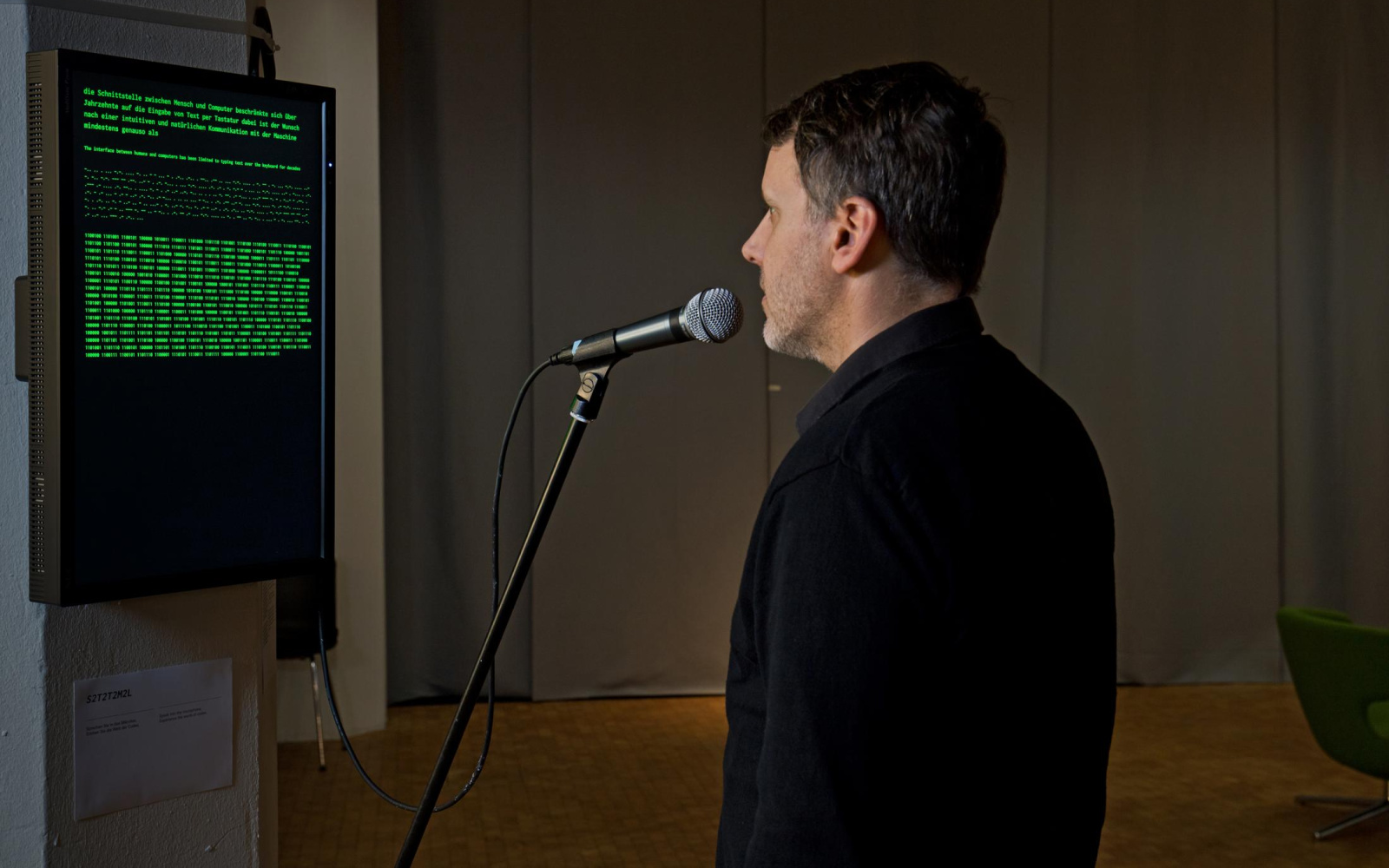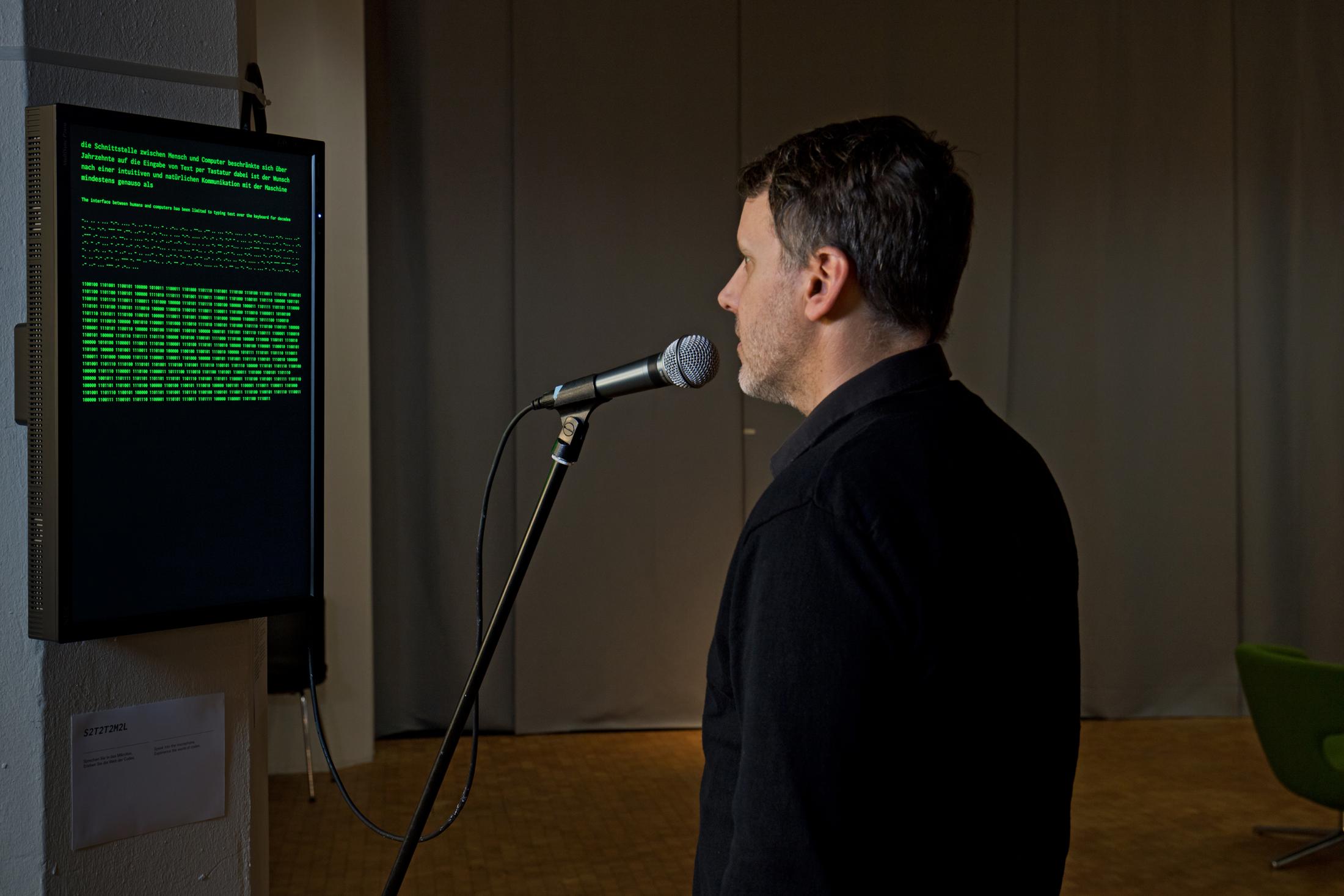S2T2T2M2L
2017
- Title
- S2T2T2M2L
- Year
- 2017
- Copy Number
- 046
- Medium / Material / Technic
- computer, monitors, LED strip
For decades, the interface between people and computers was limited to the input of text via a keyboard. The wish for a more intuitive and natural way to communicate with computers, however, goes back at least as many decades.
Only in recent years has direct interaction with computers through spoken language become possible due to tremendous progress in the areas of language recognition and processing (»Natural Language Processing«, NLP). Neural networks make it possible to transcribe the acoustic signal of human language word-for-word into text form. With the help of linguistic models (e.g. word embeddings), the recognized word groups can then be analyzed semantically in order to put the individual fragments in context. Modern algorithms make it possible to use this context to translate text into almost every language in the world in a fully automated way, effectively in real time.
The fictional Babel fish from Douglas Adams’ »The Hitchhiker’s Guide to the Galaxy« is now within reach in real life.
Speak into the microphone and name the language into which your statement is to be translated. Along with the translation, every spoken word will be reproduced in a linear (one-dimensional) pixel display in the form of optical Morse code.

